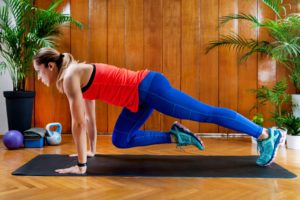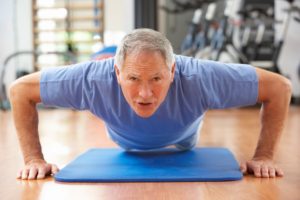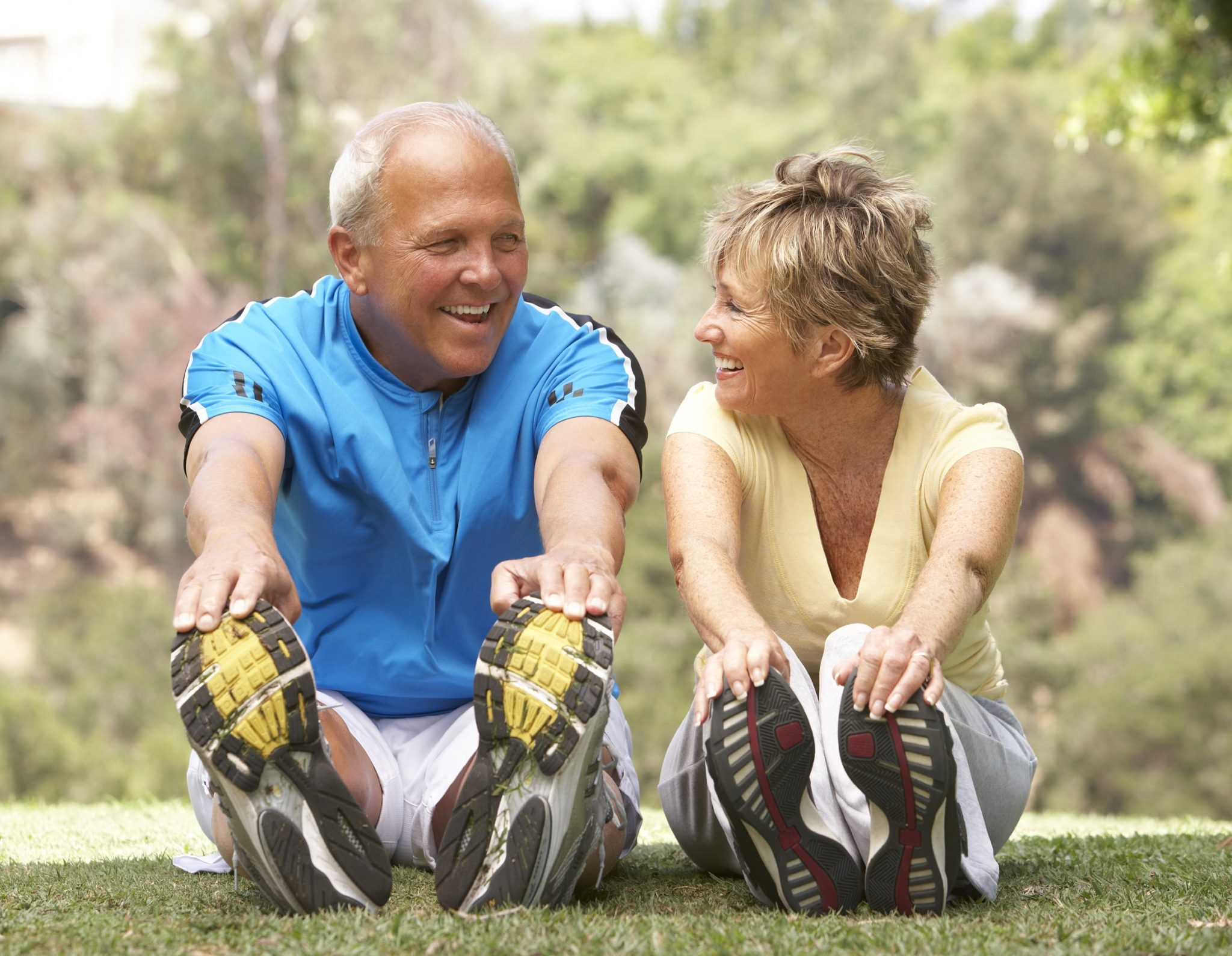The Benefits of HIIT for High Blood Pressure
Exercise is an essential component in ensuring a healthy body as well as aiding in reducing blood pressure. Furthermore, while there are many different types of healthy exercises, HIIT or High Intensity Interval Training, shows promising effects in reducing blood pressure in recent studies. In this article, we will discuss what HIIT is and the benefits. However, before we dive into HIIT’s benefits for blood pressure, let us first talk about blood pressure and how it impacts our health.
What is High Blood Pressure?
High blood pressure (HBP) is said to be the deadliest health condition in the United States. HBP is caused by the force of blood against the artery walls being too high. Often high blood pressure does not present any symptoms unless it is severe. When not properly treated, high blood pressure can cause stroke or heart disease.
Blood pressure can become persistently high from various causes, such as a family history of high blood pressure or age-related factors, specifically males over 60 and women over 55. Additionally, being obese, smoking, drinking above moderate alcohol levels, and a diet of processed foods high in sodium are other causes of the condition. Having a sedentary lifestyle with little or no exercise or physical activity is also linked to high blood pressure. In combination, these factors increase the risk of an increase in blood pressure or abrupt blood pressure spikes.
Ways to Decrease High Blood Pressure
Lifestyle changes significantly impact an individual’s blood pressure. For example, individuals should consider increasing water consumption to half their body weight in fluid ounces, reducing salt intake to less than 1500mg, avoiding processed foods high in sodium, quitting smoking, and reducing alcohol consumption.
 Also, it is vital to consider healthy additions to your diet, such as increasing intake of fruits and vegetables to more than five servings each day. This will provide the necessary nutrients while also reducing oxidative stress from inflammation and free radicals. All of these lifestyle changes can provide significant benefits.
Also, it is vital to consider healthy additions to your diet, such as increasing intake of fruits and vegetables to more than five servings each day. This will provide the necessary nutrients while also reducing oxidative stress from inflammation and free radicals. All of these lifestyle changes can provide significant benefits.
Another non-negotiable component in lowering high blood pressure is exercise. However, for individuals who are new to exercise, here is where things may become a little confusing. What type of exercise is best, and how much exercise is necessary to help lower high blood pressure? By applying a specific strategy to any exercise, individuals can decrease their blood pressure much quicker and exercise for shorter periods. The workout approach is known as HIIT (High Intensity Interval Training).
What exactly is HIIT?
HIIT is a method of exercising rather than a specific workout. Therefore, you can incorporate HIIT in practically any exercise, such as walking, riding a bike, swimming, practicing bodyweight exercises, or even dancing in the living room.
 HIIT exercise entails alternating high energy bursts of working out with short periods of active recovery rest. According to research, this type of exercise provides more health advantages than any other type of exercise. HIIT also improves the heart’s efficiency and has a significant influence on naturally decreasing blood pressure.
HIIT exercise entails alternating high energy bursts of working out with short periods of active recovery rest. According to research, this type of exercise provides more health advantages than any other type of exercise. HIIT also improves the heart’s efficiency and has a significant influence on naturally decreasing blood pressure.
One advantage of HIIT is the decrease in training time. Compared to regular aerobic training, HIIT allows individuals to achieve their goals in around half the time. As a result, HIIT reduces the amount of time exercising and makes it more efficient, allowing the body to burn more fat and increase metabolism.
How Does HIIT Affect the Heart?
High blood pressure is a “cardiovascular system issue.” Improving overall cardiovascular health can help individuals deal with high blood pressure in a variety of ways.
Stroke Volume:
High intensity interval training (HIIT) enhances your stroke volume, the volume of blood pumped through the body with each heartbeat. As a result, the need for oxygen rises as individuals move their bodies. HIIT training increases the body’s efficiency and capacity to deliver oxygen to tissues and organs. HIIT improves the body’s capacity to use oxygen more effectively.
 Reduces Resting Heart Rate:
Reduces Resting Heart Rate:
A low resting heart rate is defined as less than 60 and is associated with excellent physical fitness. Athletes’ resting heart rates are generally low. A resting heart rate over the usual range of 60-100 beats per minute increases the risk of cardiovascular disease. Conversely, a high resting heart rate is associated with a lack of physical fitness, elevated blood pressure, increased body weight, and increased quantity of circulating blood lipids in the body—the higher the resting heart rate, the greater the chance of dying young.
How to include HIIT into a workout
HIIT training uses interval periods with a ‘work-to-rest’ ratio. This ratio might change based on the degree of physical fitness. Individuals new to exercise should begin with the easiest ratio with a longer active recovery rest period. Remember that the phrase “Active Recovery” does not imply that you should stop doing anything. It implies movement at a lower level of intensity to keep the heart rate elevated, but not as elevated as it would be at the “Work” intensity. This approach can be part of virtually any exercise, including walking, jogging, jumping rope, cycling, and even weight training. While it may seem like HIIT Workouts at home would be difficult to put together, the ratios below will help you form your own workout in the comfort of your own space. Remember, before beginning any exercise, it is essential to consult a physician.
A beginning HIIT ratio may be a 1:4 ratio. For example, when using HIIT in a walking routine, this ratio implies walking as quickly as possible for 15 seconds, then slowing down to an average pace for 60 seconds (60 is 4X15; thus, this is HIIT exercise with a 1:4 ratio). Individuals may consider experimenting with other ration variations once they have mastered a beginning level of HIIT.
Beginner HIIT Ratio Variations
15-seconds of intensive movement followed by 60 seconds of active recovery is a 1:4 ratio.
15-seconds of intensive movement followed by 45 seconds of active recovery in a 1:3 ratio.
Intermediate HIIT Ratio Variations
30-seconds of intensive movement followed by 30-seconds of active recovery is a 1:1 ratio.
30-seconds of intensive movement followed by 15 seconds of active recovery is a 2:1 ratio.
HIIT Ratio Variations for Individuals in Good Physical Health
30-seconds of intensive movement followed by 10 seconds of active recovery is a 3:1 ratio.
One minute of intensive movement followed by 15 seconds of active recovery is a 4:1 ratio.
HIIT workout on a stationary cycle
Individuals that prefer cycling over walking may want to consider trying the below variation:
Warm-up for 5 minutes at a low cycle setting.
Next, increase the tension setting and pedal as quickly as possible for 20 seconds.
Lastly, lower the tension on the bike and cycle for 2 minutes at a comfortable pace.
Repeat the process above five more times to complete the HIIT workout.
Wrapping Up the Benefits of HIIT for Blood Pressure
Health is wealth, and Evexia Family Chiropractic cares for your entire health and well-being. If you are someone who struggles with high blood pressure, we hope the above information on the benefits of HIIT give you the motivation, inspiration, and encouragement to begin an active lifestyle. HIIT enhances your stroke volume, reduces your resting heart rate, burns fat, and increases your metabolism. The workouts can be done right at home, and the best part about the workout is it does not have to be hours long.
If you are unable to start a workout routine due to musculoskeletal conditions, schedule an appointment with Dr. Deborah Perkins at Evexia Family Chiropractic. The first step to healthy lifestyle changes is talking to the experts. At Evexia Family Chiropractic, we focus on our patient’s overall health. Call us today to start living a healthier, happier life!



